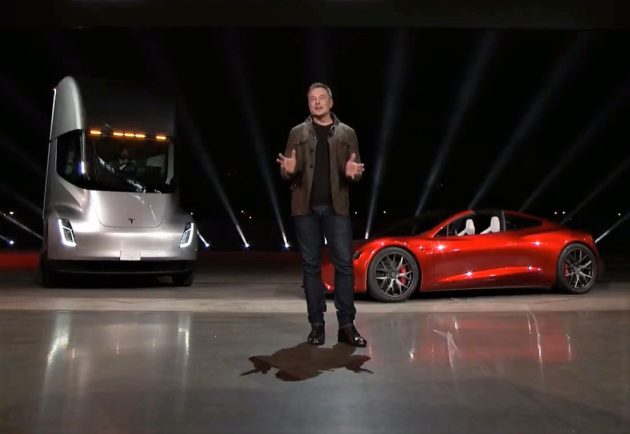
Tesla today reported wider-than-expected financial losses in the first quarter — due to what the company said were delivery challenges, a seasonal dip in demand and the unanticipated effects of pricing decisions.
Despite the downturn from what had been a profitable couple of quarters, Tesla CEO Elon Musk was bullish on several fronts, including rollouts for the company’s Semi truck and Model Y crossover SUV, plus the opening of Tesla’s Gigafactory in Shanghai, China.
Musk is even planning to offer car insurance policies starting next month, with pricing determined by the data that’s received from the company’s cars.
“We have direct knowledge of the risk profile of customers and the car,” he explained during today’s teleconference with financial analysts. “If they want to buy Tesla insurance, they have to agree to not drive the car in a crazy way. Or they can, but then the insurance rate is higher.”
If it’s done right, in-house insurance could add another revenue stream to Tesla’s bottom line. That could help ease the pain for Tesla’s accountants as well as for investors, who have seen share prices slump due to concerns about long-term profitability. (The price slipped nearly 2 percent during today’s trading, to $258.66 at the close.)
Net losses amounted to $702 million, and adjusted net losses per share were $2.90. That’s 13 percent worse than the year-ago figure and four times as much as what some analysts were expecting. Revenue was $4.5 billion, which was better than the year-ago figure but not as high as analysts thought it would be.
In its quarterly letter to shareholders, Tesla said there was a production jam-up that forced a large number of deliveries to be deferred into the second quarter. “This is the most difficult logistics problem I’ve ever seen, and I’ve seen some tough ones,” Musk said.
In all, 63,000 electric cars were delivered during the first quarter, which fell far short of expectations.
In addition to the logistical challenges, Tesla said pricing changes for its Model S and Model X cars caused a higher-than-anticipated return rate. One disincentive to sales was the gradual phase-out of federal tax credits for electric vehicles.
Previously: Elon Musk unveils Tesla’s Robotaxi concept
The good news is that powertrain improvements have boosted the performance and range of those two models: The maximum range was extended to 370 miles on a full charge for the Model S, and 325 miles for the Model X SUV.
For the past two years, Tesla has been focused on ramping up production of the Model 3, which finally reached its pricing goal of $35,000 in February. Tesla reported producing 63,000 Model 3 cars during the quarter and is aiming to raise that figure higher.
“If our Gigafactory Shanghai is able to reach volume production early in Q4 this year, we may be able to produce as many as 500,000 vehicles globally in 2019,” the company said in its shareholders’ letter. “This is an aggressive schedule, but it is what we are targeting.”
Musk said that the Shanghai construction project was “going incredibly well,” and that he was receiving “midnight Gigafactory email” on an almost nightly basis.
On other financial fronts:
- Tesla’s cash on hand fell by $1.5 billion over the course of the quarter, to $2.2 billion. A $920 million convertible bond repayment accounted for most of that reduction, and the delivery snag was an additional factor. Another $180 million loan payment, linked to Tesla’s SolarCity subsidiary, is said to be due this month.
- One analyst asked Musk whether he wished that he had persevered with efforts to take Tesla private last year — efforts that ended up getting him in hot water with the Securities and Exchange Commission. “I would prefer that we were private,” Musk replied, “but unfortunately that ship has sailed.”
- Musk told analysts that “at this point I do think there is some merit to raising capital,” but he didn’t provide further details.
